Foraging is a skill that is seldom taught in society but is one of the best ways to get food in lean times, or even just for fun.
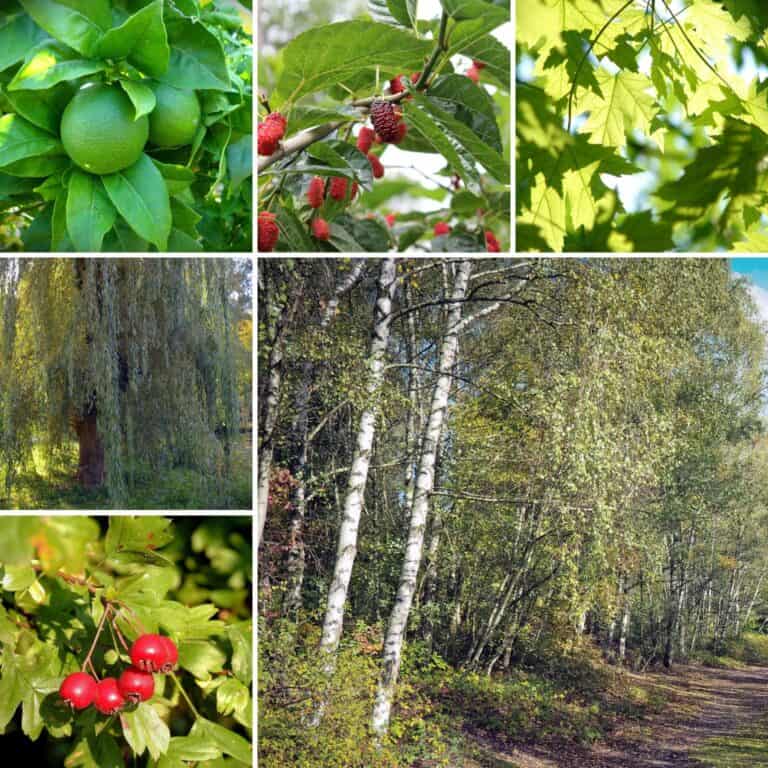
It is because of this lack of education that a lot of people don’t know the abundance of wild food that is both free and healthier than what you can find in a grocery store.
A lot of these incredible foods can be found right under your nose, even in your own backyard or on a local trail.
Most people think of berries or fiddleheads when they think of foraging but did you know that there is some nutrition to be found in tree leaves?
Yes, there are a variety of tree leaves that are safe to eat and can even provide certain nutrition. This includes leaves from maples, sassafras, and willow trees.
Read on to learn a little bit about why you would want to forage tree leaves and some of the best species that you can use for your next salad or snack.
Why Would You Want To Forage Tree Leaves?
There are a lot of tree species that have edible leaves early in the season when they are just beginning to come out.
If you are a year-round forager then there are some tree types that can be harvested multiple times in a season.
If you’re into growing your own gardens then planting your own trees would be beneficial.
Not only would you have access to leaves for eating, but a lot of trees also produce nuts, seeds, and berries.
Having trees as a choice for foraging provides you incredible dietary benefits, regardless of the season.
Go Beyond Just Eating The Leaves
I imagine that for most of you picturing eating tree leaves you’re just imagining a person grazing like a giraffe and just devouring handfuls of young, tender leaves.
However, there are other ways to incorporate some tree leaves into your diet without turning into an herbivore.
Turn It Into A Salad
Something as simple as a salad with wild edibles and a light vinaigrette can really enhance a meal.
Combine them with fresh fiddleheads or local berries and you’ll have a dish to delight the senses.
If the leaves are too strong for you in a salad, then you can slowly nibble them in a survival situation to get some nutrition.
Use It In A Smoothie
Adding fresh foliage to your morning smoothie can provide you with some roughage to give you that boost of energy in the morning.
Simply chop it up as best you can or add it to a food processor for a quick smoothie fix.
Dry The Leaves And Use In A Tea
Some trees, such as the European White Birch can be dried and turned into tea. Mulberry leaves are another common ingredient for making a delicious tea with health benefits.
10 Trees That Have Edible Leaves
Here are the top 12 tree leaves that you can eat and incorporate into your foraging plan for the year.
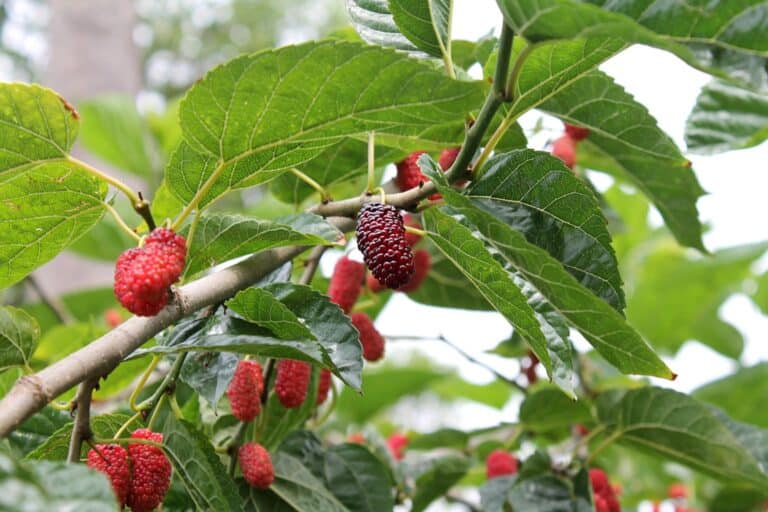
1. Mulberry Trees
These trees offer more than just edible leaves early in the year. The mulberry tree also produces a slew of berries in the late spring until late summer.
The leaves of a mulberry tree in particular have been used for generations as a way to make a delicious tea.
If you have the right climate for these deciduous trees then planting one in an organic garden will produce a boon of berries, silkworms, and leaves for your tea collection.
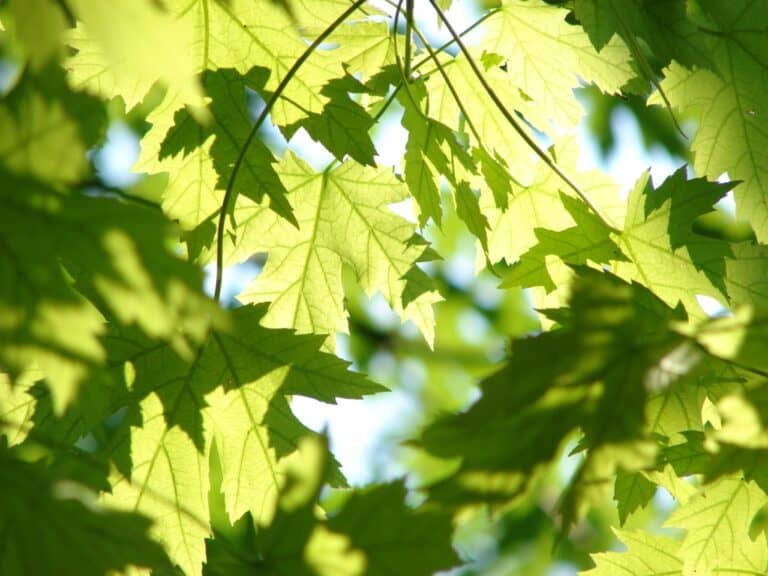
2. Maple Trees
The beloved maple tree is known for its usefulness in making maple syrup from the sap in the spring months.
However, a lesser-known fact is that you can harvest the maple leaves and turn them into a tasty dish that originated in Japan.
The best types of maple to harvest the leaves from include sugar, red, and silver maples.
Keep in mind that eating maple leaves is not as easy as picking them off the tree and popping them into your mouth.
You have to collect the leaves and store them in an airtight container covered in salt for at least 10 months.
This breaks down the fibrous material of the leaf itself. Once that process is done you can follow the Japanese and deep fry the leaves in batter.
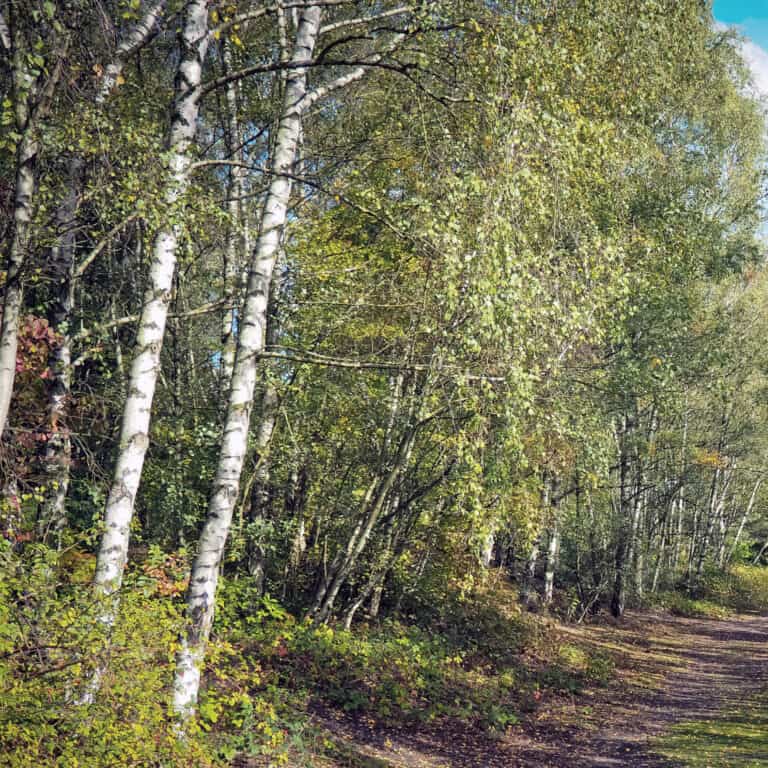
3. Birch Trees
Birch trees are great in that they can supply you with an endless amount of firestarter and potentially Chaga mushrooms which can also be harvested.
Did you know you can harvest the young leaves of silver birch trees in the early spring when they are young and tender? They tend to have a slightly bitter taste that pairs well with other forms of spring greens.
Additionally, as stated above, you can dry the leaves and use them to make herbal tea.
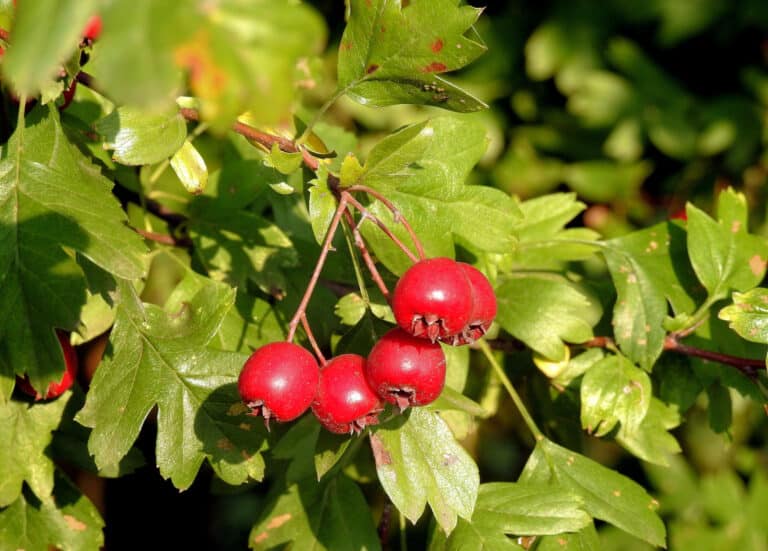
4. Hawthorne
Hawthorne is originally from the UK but has been naturalized all over North America, all the way up to Canada.
The fruits of the Hawthorne tree are what most people are after to make some pretty amazing jam.
If you are interested in eating the leaves, you’ll want to get them when they are young and tender.
Any of the new leaves will do and it is a common snack for hikers who just want a quick bite. Additionally, you can use them in salads since they have been said to have a nice, nutty taste.
If you are looking to grow this tree on your property be careful, it is still considered invasive and a problem in North America.
5. Sassafras
Sassafras has been used for a long time to make a distinct tea. You can commonly associate it with the root beer flavor since that is where it was first derived from.
The leaves are edible if harvested young and the nice thing is that these leaves don’t have to be cooked or prepared first. You can easily toss a handle into a salad for some filler with a mild taste.
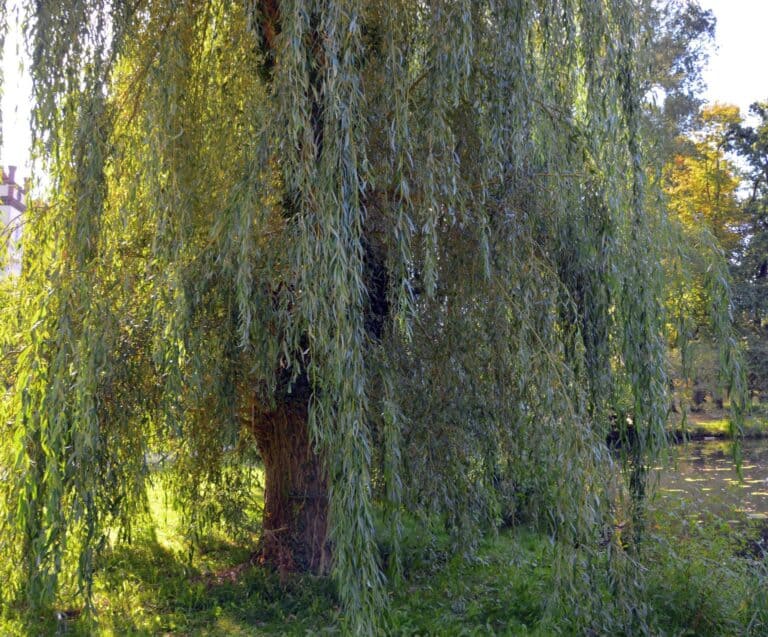
6. Willow Trees
Willow is commonly used as a substitute for aspirin as it has powerful effects once turned into a tincture. The leaves are also edible but really only in survival situations.
The reason you don’t want to eat this leaf as part of your regular diet is that it can be incredibly bitter.
This is off-putting for a lot of people but if you ever find yourself out in the wild with some willow, you will be able to eat some of the leaves without any detrimental effects.
7. Goji
I’m sure every health fanatic has heard of the magnificent power of Goji berries. They are commonly dried or found in juice form and have become incredibly popular as a superfood.
The leaves are also edible and have some of the nutritional value found in the berries.
They are another leaf that can be relatively bitter to eat but the nice thing is you don’t have to cook them and can toss them in a smoothie or salad.
If you’re interested in Goji leaf tea you can dry them much as you would with the silver birch leaves.
8. Beech
Beech trees are often known for beech nuts which are high in protein and fats. They are a common food source for bears in the fall but we are able to eat them as well.
Additionally, the young new leaves of a Beech tree are also edible if cooked a little before consumption. There are no known toxicities for consuming leaves from a Beech tree.
9. Lime Trees
If you’re looking to get the crisp and freshness of iceberg lettuce then the young leaves of the Linden and Lime trees can provide you that same experience with their young and tender leaves.
If you pay attention to the base of the tree you can harvest the young leaves straight through to fall from the early spring.
You’ll find the American Linden tree in North America which can be cooked or eaten raw in salads.
If you’re thinking of growing this variety of trees in your garden they are great for attracting local wildlife and for building windbreaks in your garden.
10. Coniferous Trees
Most people think that the bark is the only edible part of a pine tree and why this is mostly true, you can also utilize the needles for some extra nutrition.
All spruce, pine, and fir trees can have their needles simmering to create a tea that is high in antioxidants and vitamin C
There are poisonous look-alikes like the Yew tree (specifically the English Yew and Pacific Yew) which are toxic for us to ingest.
Be sure to identify the tree properly to avoid any possible issues from ingestion.
How To Tell If A Tree Leaf Is Edible
While there is no sure-fire way to tell if a tree leaf is edible or not there are some steps you can take to mitigate any risk to your health.
Over and above these techniques you should have a field guide that is descriptive enough that it can clearly show you what species is in front of you.
- Try for the poisoning on contact approach – Most toxic substances can elicit a response just by rubbing them on your skin or lips. Break the leaf and rub it on your arm or one of your lips and wait 30 minutes to see if there is any kind of rash or blistering. This will give you an indication of what it will do to you on the inside.
- A small taste test can be a good indicator – Only do this test if you know that the leaf won’t kill you. If you swirl a small part of the leaf around your mouth and wait around 15-20 minutes you can get a good idea if the leaf will irritate you.
- Smell the leaf – As with most things that are toxic in the wild, if there is a strong odor that resembles anything like bitterness or an unpleasant odor then you should try to stay away from eating that leaf.
Another issue with eating tree leaves is that our digestive system is not capable of breaking down the various starch and fibers. Animals like cattle and deer have enzymes and multiple stomachs to help them break it all down.
This is why we can only eat the younger, more tender leaves since they haven’t fully developed and are easier on our digestive tracts.
Final Thoughts
Foraging should be something that is taught in school since it can help you in a survival situation and help you free up some monetary resources by providing free food. You just have to be able to find it and identify it accordingly.
Just remember that you can’t eat just any tree leaf, but with some preparation and knowledge, you could easily supplement your food needs with fresh greens that aren’t sprayed with pesticides or other chemicals.
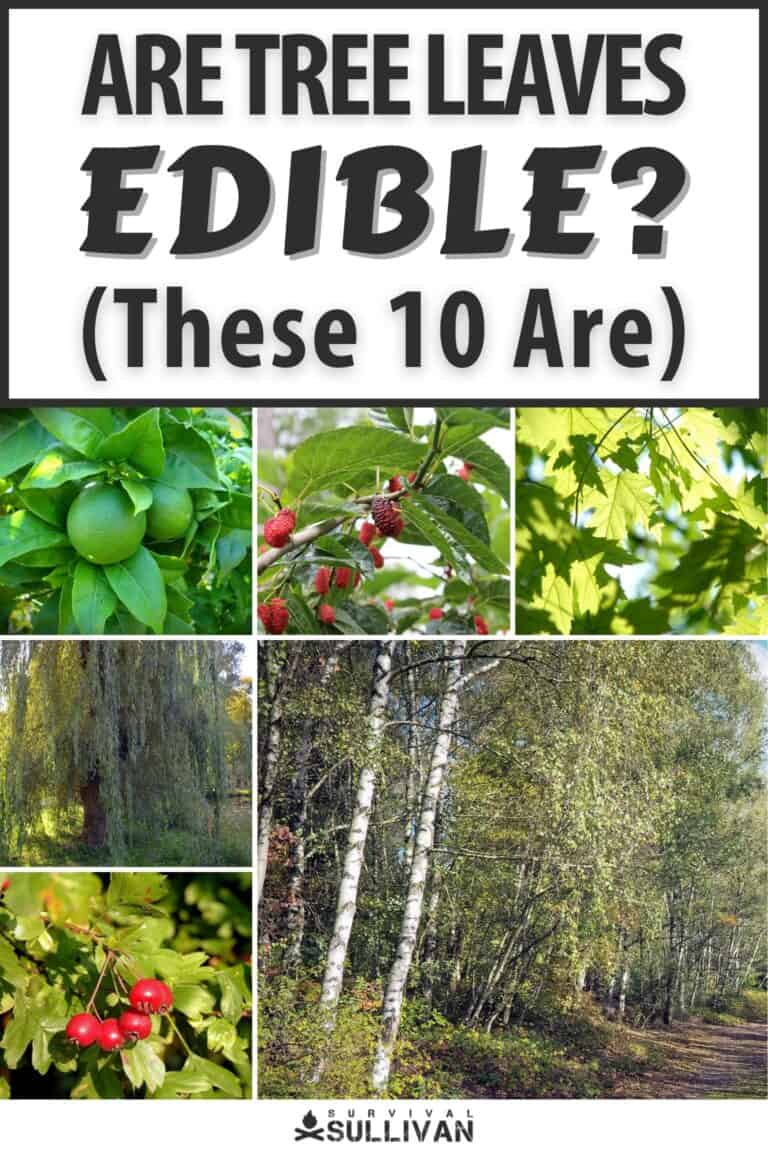

Tom Marlowe practically grew up with a gun in his hand, and has held all kinds of jobs in the gun industry: range safety, sales, instruction and consulting, Tom has the experience to help civilian shooters figure out what will work best for them.
